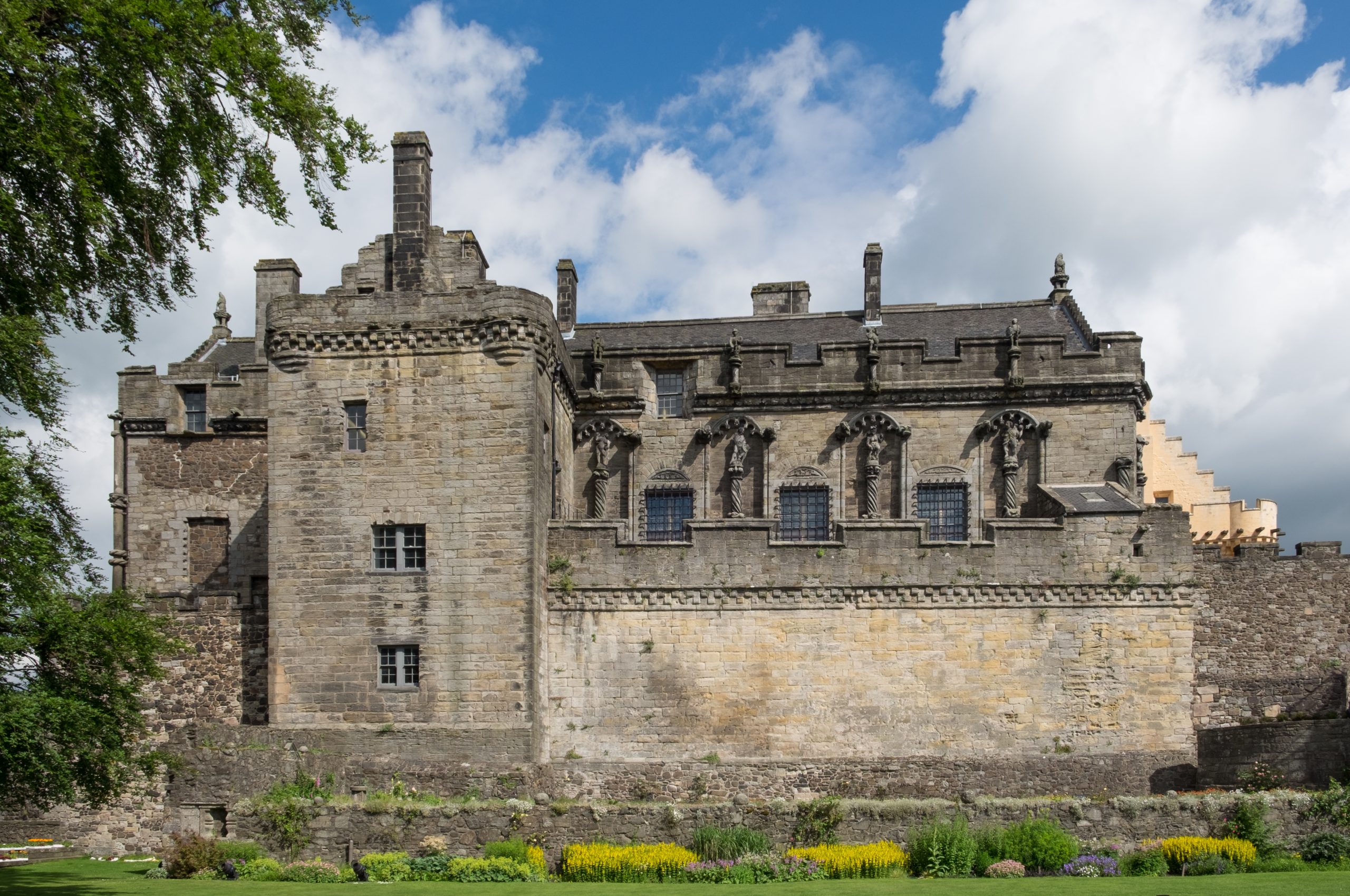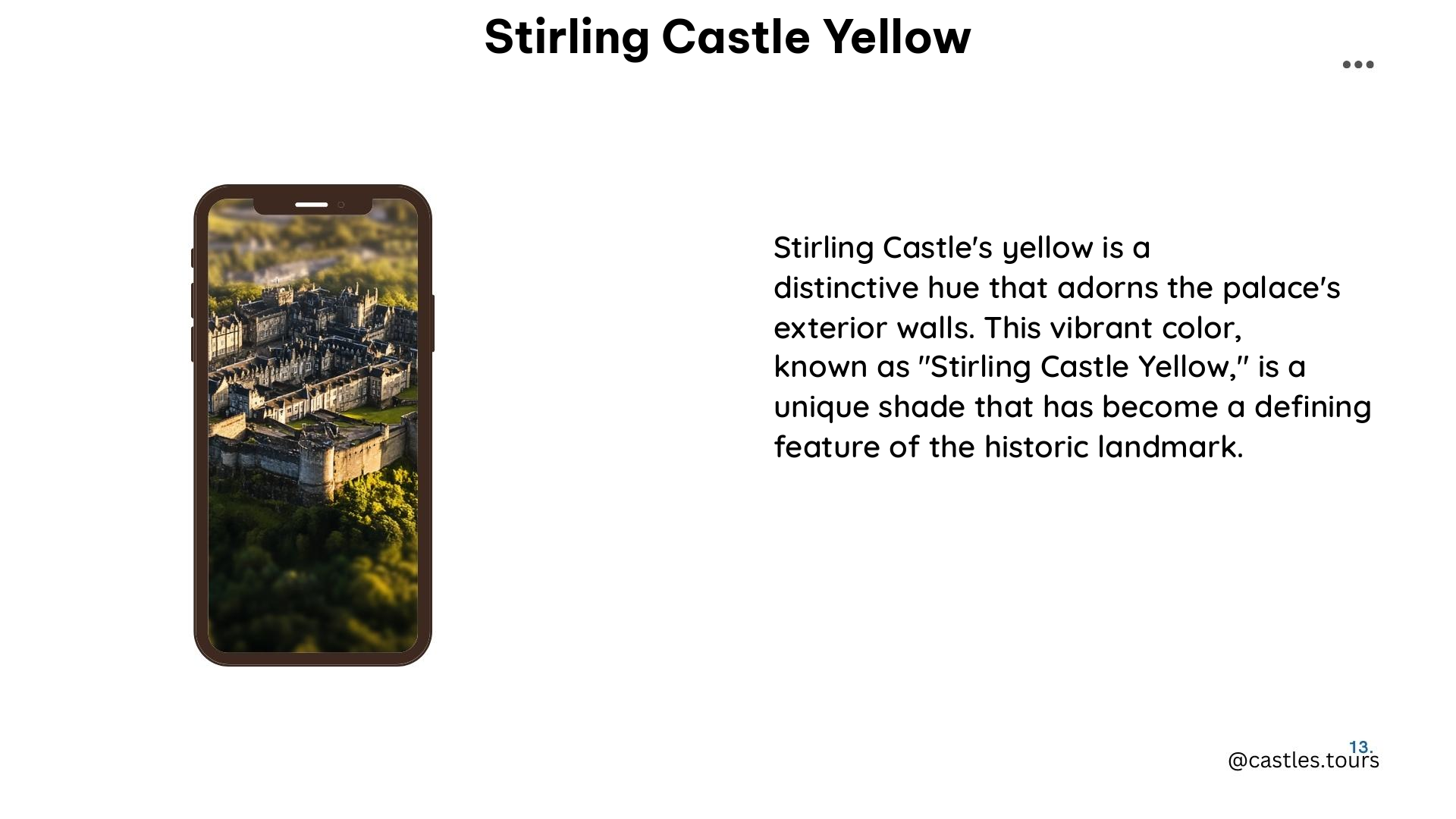Stirling Castle, located in the heart of Scotland, is a true architectural marvel. One of the most striking features of this historic site is the distinctive yellow hue of its exterior walls. This vibrant color has captured the imagination of visitors and historians alike, and its story is as fascinating as the castle itself.
The Origins of the Yellow Color

The yellow color of Stirling Castle’s exterior walls is the result of a meticulous restoration project undertaken in the 1990s. The Great Hall, a central feature of the castle, was the focus of this restoration effort, which aimed to recreate the building’s original 16th-century appearance.
Through extensive research and archaeological investigations, the restoration team discovered that the Great Hall had been painted in a bright yellow pigment during the castle’s heyday as a royal residence. This discovery led to the decision to restore the hall to its former glory, with the distinctive yellow color serving as a testament to the castle’s rich history.
The Significance of the Yellow Color

The yellow color of Stirling Castle’s exterior walls holds significant historical and cultural importance. During the 16th century, when the castle was a principal royal residence, the use of vibrant pigments like yellow was a symbol of wealth, power, and prestige.
The restoration of the Great Hall’s yellow color, therefore, serves to highlight the castle’s former status as a center of Scottish royal power. It also provides visitors with a tangible connection to the castle’s past, allowing them to experience the grandeur and opulence that would have been on display during the castle’s heyday.
Controversy and Debate
The decision to paint the Great Hall yellow was not without its critics. Some local residents and historians felt that the bright color was at odds with the traditional image of a medieval castle, which is often associated with more subdued, earthy tones.
However, the restoration team argued that the yellow color was historically accurate and that it helped to emphasize the architectural features of the Great Hall. They also pointed out that the use of vibrant pigments was common in the 16th century, and that the yellow color was an integral part of the castle’s original design.
Visitor Experience
Today, Stirling Castle is a popular tourist destination, attracting over 600,000 visitors each year. The castle’s distinctive yellow exterior is a major draw for visitors, who are often captivated by the building’s striking appearance and the story behind its unique color.
Visitors to Stirling Castle can explore the Great Hall and other parts of the castle, where they can learn more about the building’s history and the restoration process that led to the vibrant yellow color. The castle’s guided tours and interactive exhibits provide visitors with a deeper understanding of the site’s cultural and historical significance.
Conclusion
The yellow color of Stirling Castle’s exterior walls is a testament to the castle’s rich history and the dedication of those who have worked to preserve its legacy. From its origins as a symbol of wealth and power to its role in the castle’s restoration, the yellow color has become an integral part of Stirling Castle’s identity, captivating visitors and historians alike.
References:
- Historic Environment Scotland. (n.d.). Stirling Castle. Retrieved from https://www.historicenvironment.scot/visit-a-place/places/stirling-castle/
- Slate. (2015, August 26). Scotland’s Stirling Castle: The Great Hall illustrates the complexity of historical restoration. Retrieved from http://www.slate.com/blogs/the_eye/2015/08/26/scotland_s_stirling_castle_the_great_hall_illustrates_the_complexity_of.html
- 99% Invisible. (2015, August 25). The Great Restoration. Retrieved from https://99percentinvisible.org/episode/the-great-restoration/
- YouTube. (2021, September 19). Stirling Castle’s Uncharacteristically Bright Yellow Hall. Retrieved from https://www.youtube.com/watch?v=1E_UOfKP7Xg
- Wikipedia. (n.d.). Stirling Castle. Retrieved from https://en.wikipedia.org/wiki/Stirling_Castle
